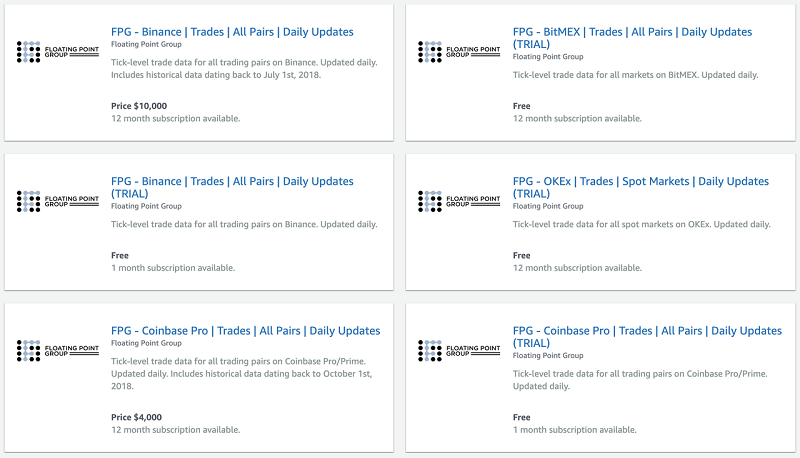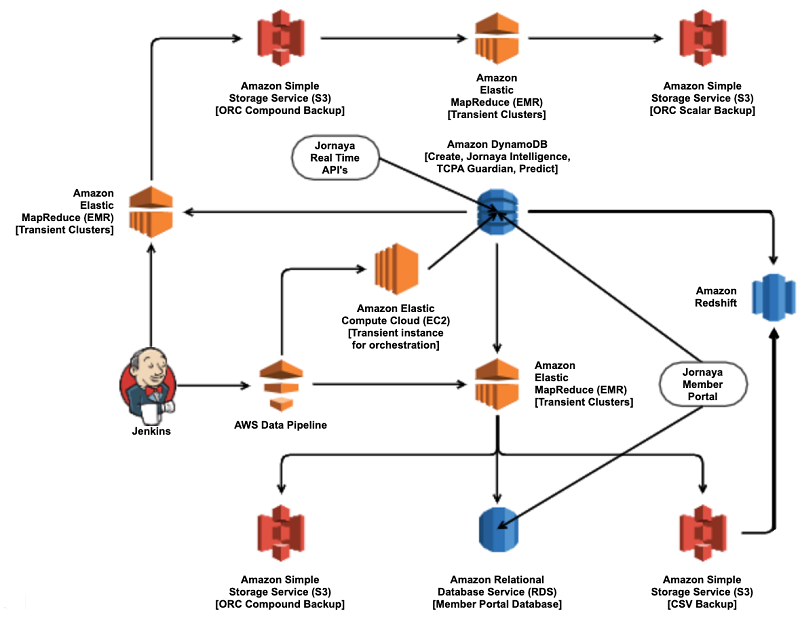AWS Big Data Blog
Category: Amazon Athena
Cross-account AWS Glue Data Catalog access with Amazon Athena
June 2021 Update – Amazon Athena has launched built-in support for AWS Glue Data Catalogs sharing. The below solution is no longer relevant and you should make use of the built-in feature. Many AWS customers use a multi-account strategy. A centralized AWS Glue Data Catalog is important to minimize the amount of administration related to […]
Collect and distribute high-resolution crypto market data with ECS, S3, Athena, Lambda, and AWS Data Exchange
This is a guest post by Floating Point Group. In their own words, “Floating Point Group is on a mission to bring institutional-grade trading services to the world of cryptocurrency.” The need and demand for financial infrastructure designed specifically for trading digital assets may not be obvious. There’s a rather pervasive narrative that these coins […]
Extract, Transform and Load data into S3 data lake using CTAS and INSERT INTO statements in Amazon Athena
April 2024: This post was reviewed for accuracy. Amazon Athena is an interactive query service that makes it easy to analyze the data stored in Amazon S3 using standard SQL. Athena is serverless, so there is no infrastructure to manage, and you pay only for the queries that you run. You can reduce your per-query […]
Connect Amazon Athena to your Apache Hive Metastore and use user-defined functions
Amazon Athena is an interactive query service that makes it easy to analyze data in Amazon S3 using standard SQL. Athena is serverless, so there is no infrastructure to manage, and you pay only for the queries that you run. This post details the two new preview features that you can start using today: connecting […]
Prepare data for model-training and invoke machine learning models with Amazon Athena
Amazon Athena is an interactive query service that makes it easy to analyze data in Amazon S3 using standard SQL. Athena is serverless, so there is no infrastructure to manage, and you pay only for the queries that you run. Amazon Athena has announced a public preview of a new feature that provides an easy […]
Query any data source with Amazon Athena’s new federated query
April 2024: This post was reviewed for accuracy. Organizations today use data stores that are the best fit for the applications they build. For example, for an organization building a social network, a graph database such as Amazon Neptune is likely the best fit when compared to a relational database. Similarly, for workloads that require […]
Simplify ETL data pipelines using Amazon Athena’s federated queries and user-defined functions
Amazon Athena recently added support for federated queries and user-defined functions (UDFs), both in Preview. See Query any data source with Amazon Athena’s new federated query for more details. Jornaya helps marketers intelligently connect consumers who are in the market for major life purchases such as homes, mortgages, cars, insurance, and education. Jornaya collects data […]
Access and manage data from multiple accounts from a central AWS Lake Formation account
his post shows how to access and manage data in multiple accounts from a central AWS Lake Formation account. The walkthrough demonstrates a centralized catalog residing in the master Lake Formation account, with data residing in the different accounts. The post shows how to grant access permissions from the Lake Formation service to read, write and update the catalog and access data in different accounts.
How ironSource built a multi-purpose data lake with Upsolver, Amazon S3, and Amazon Athena
September 8, 2021: Amazon Elasticsearch Service has been renamed to Amazon OpenSearch Service. See details. This is a guest post co-written by Seva Feldman at ironSource Mobile and Eran Levy at Upsolver. ironSource, in their own words, is the leading in-app monetization and video advertising platform, making free-to-play and free-to-use possible for over 1.5B people around […]
Analyze Google Analytics data using Upsolver, Amazon Athena, and Amazon QuickSight
In this post, we present a solution for analyzing Google Analytics data using Amazon Athena. We’re including a reference architecture built on moving hit-level data from Google Analytics to Amazon S3, performing joins and enrichments, and visualizing the data using Amazon Athena and Amazon QuickSight. Upsolver is used for data lake automation and orchestration, enabling customers to get started quickly.









